Who is the Justice Society - Meet the Black Adam superteam
The Justice Society is the first ever superhero team from comics - and now they're coming to the big screen in Black Adam
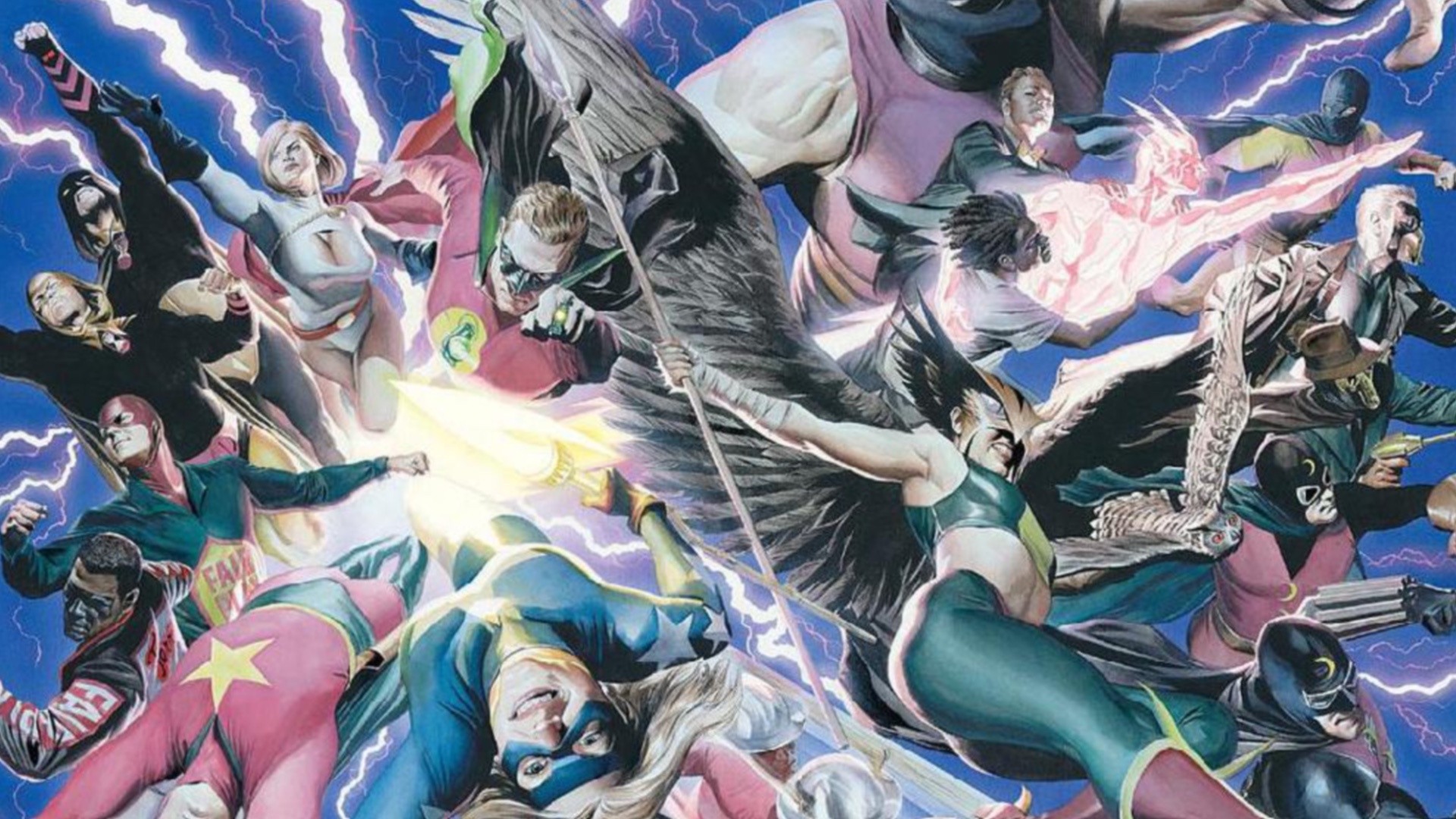
The Justice Society of America is the first superhero team in comic books, founded way back in 1940, with a legacy that stretches back over 80 years in both the DC Universe and the real world. And now, after all that time, a version of the team is finally coming to the big screen as part of Black Adam, which adapts a seminal story in the JSA's modern history.
Outside of comics, the Justice Society has often been overshadowed by its more famous successor team, the Justice League (as in Superman, Batman, Wonder Woman, Flash, Aquaman, and dozens of others over the years). But the foundations of the shared DC Universe lie with the JSA, as well as the origins of the DC Multiverse/Omniverse.
Now that the team is coming to movies and returning in comics at the same time, there's more reason than ever to dig into their history, both with Black Adam and the DC Universe at large, including who's part of the team, who their enemies are, and what their real relationship is with the Justice League.
Who is the Justice Society?
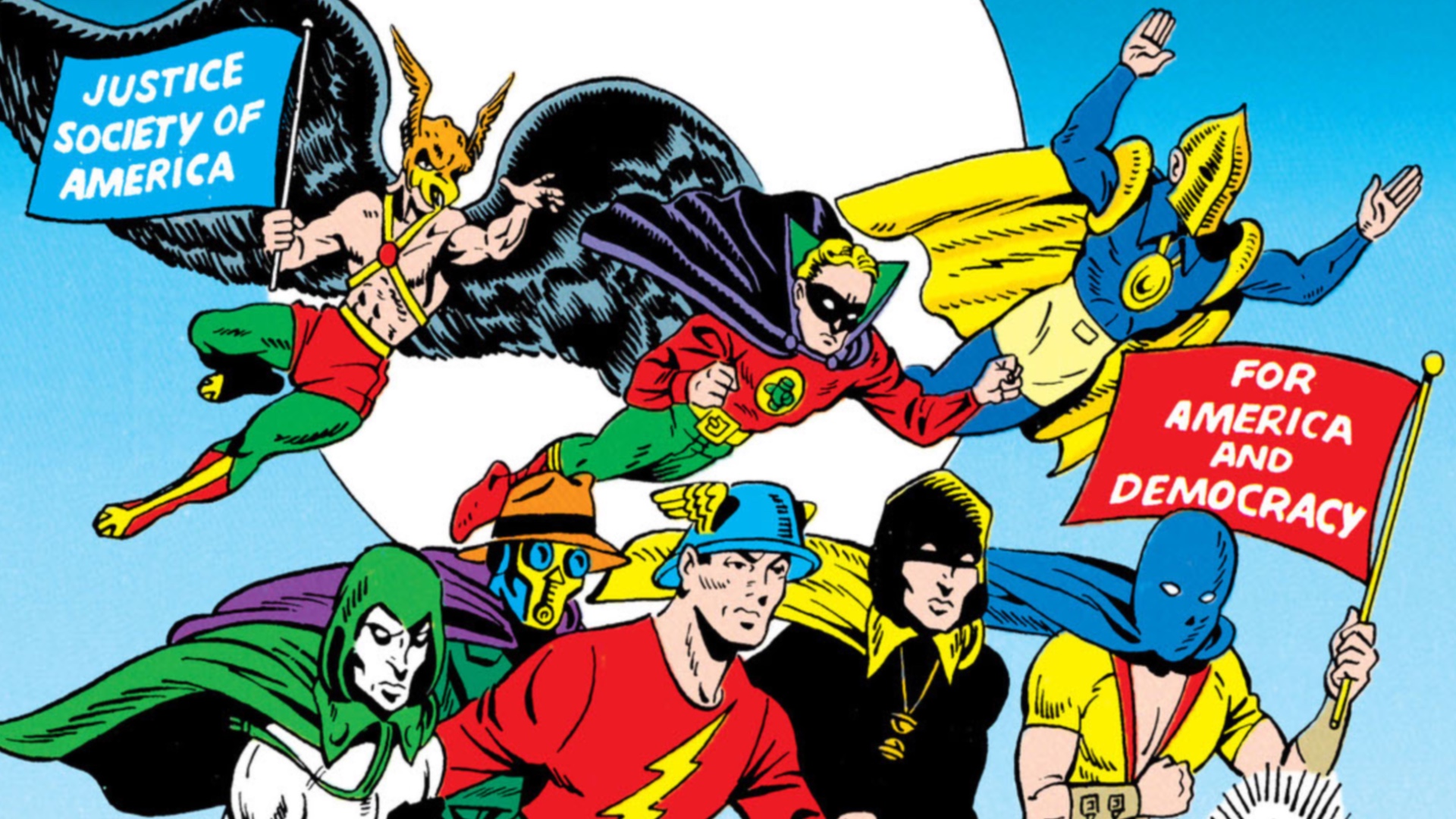
The original JSA were introduced by writer Gardner Fox, who conceived the team alongside editor Sheldon Moldoff and artist Everett E. Hibbard in All-Star Comics #3, cover dated winter 1940/1941. Interestingly, Fox is also the writer who created the Justice League of America almost 20 years later, and who first introduced the idea that the JSA and JLA live in two different timelines of the same Multiverse - but more on that later.
Back in 1940, the original JSA consisted of most of the biggest heroes of National Publications (the name DC went by in the Golden Age) as well as some characters published by All-American Publications (which was later absorbed into National), including founding members Hawkman, Dr. Fate, Dr. Mid-Nite, the original Green Lantern Alan Scott, the Atom, Jay Garrick the original Flash, Sandman, Hourman, the Spectre, and Johnny Thunder.
Over the course of their early Golden Age adventures, numerous heroes came and went thanks to a behind-the-scenes rule which established that only characters who didn't have their own titles would be part of the team.

The roster of the Golden Age JSA also included the original versions of the heroes Wildcat, Hawkgirl, Wonder Woman, Starman, Mister Terrific, Red Tornado, and Black Canary, with Batman and Superman included as honorary members (a tradition that would continue into the founding of the Justice League almost 20 years later).
Get the best comic news, insights, opinions, analysis and more!
Though the early team had plenty of enemies, their greatest foes were the Injustice Society, a villainous mirror team consisting of some of the arch-enemies of the members of the JSA, including founding members the mystical Wizard, evil super-spy the Gambler, time-traveler Per Degaton, psychic villain Brain Wave, the diabolically brilliant Thinker, and the immortal Vandal Savage, and later additions the Shade, Solomon Grundy, Tigress, Sportsmaster, the Fiddler, the Icicle, and Harlequin, many of whom have kept their associations with the Injustice Society into the modern era.
The original JSA disappeared from comics in the early '50s thanks to a moral panic over superhero comics that left Superman, Batman, and Wonder Woman just about the only heroes consistently being published through the decade.
The Justice Society of Earth-Two
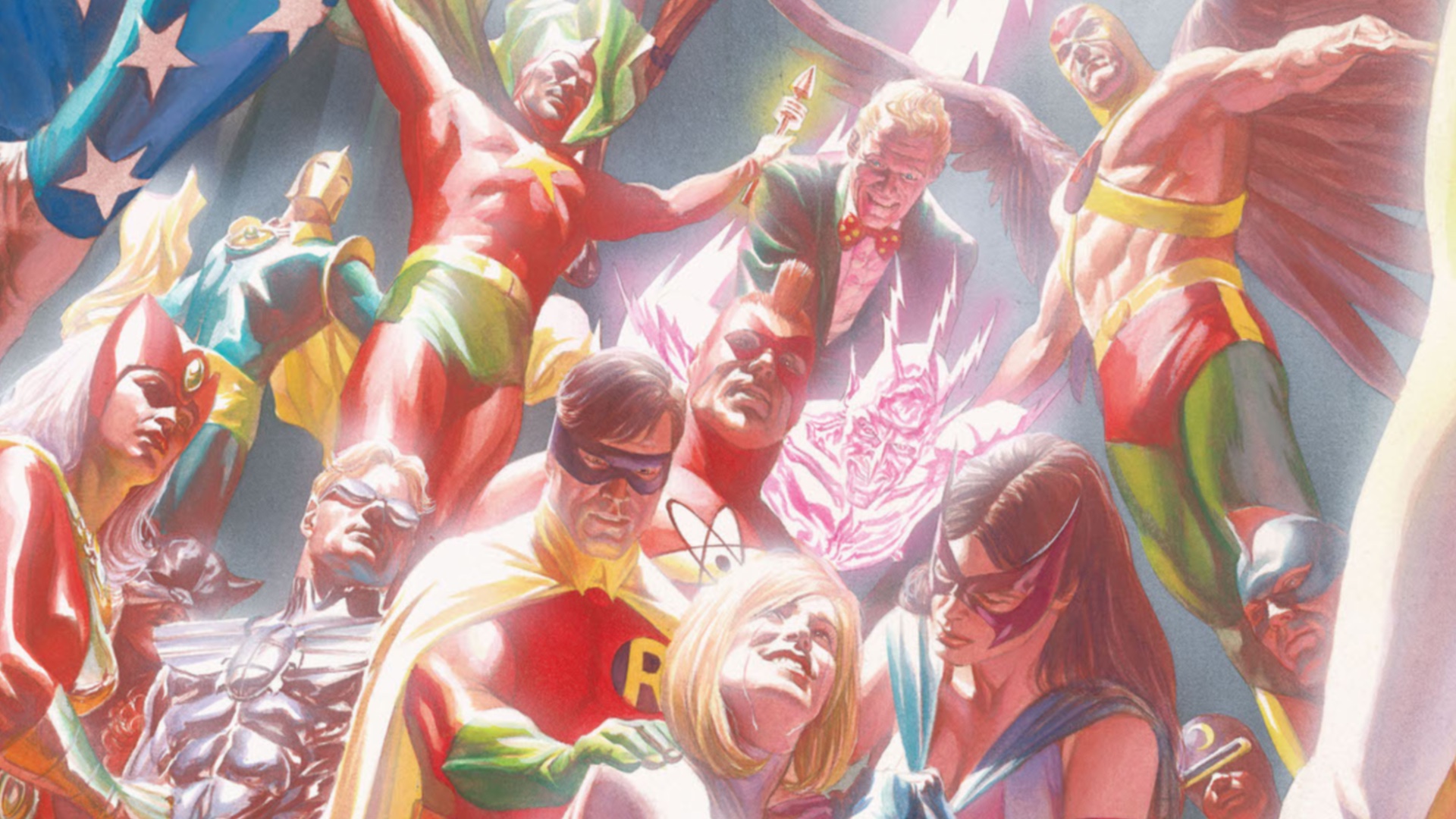
In the DC Universe, the JSA's disappearance in the '50s was later explained as a result of the team disbanding and most of its members going into retirement to avoid being unmasked by anti-superhero legislation from the US government.
But the team wouldn't stay out of the picture for long, as the creation of the Justice League - a similar team of heroes co-created by the JSA's original co-creator Gardner Fox - re-opened the floodgates of superhero comics.
With new versions of heroes such as the Flash, the Atom, Green Lantern, Hawkman, and others, and modern versions of Superman, Batman, and Wonder Woman on the JLA, it wasn't long at all before Fox, who also wrote numerous Flash comics, established the idea that the original Golden Age JSA versions of the heroes live on the parallel world of Earth-Two in the landmark story 'The Flash of Two Worlds,' published in 1961's Flash #123.
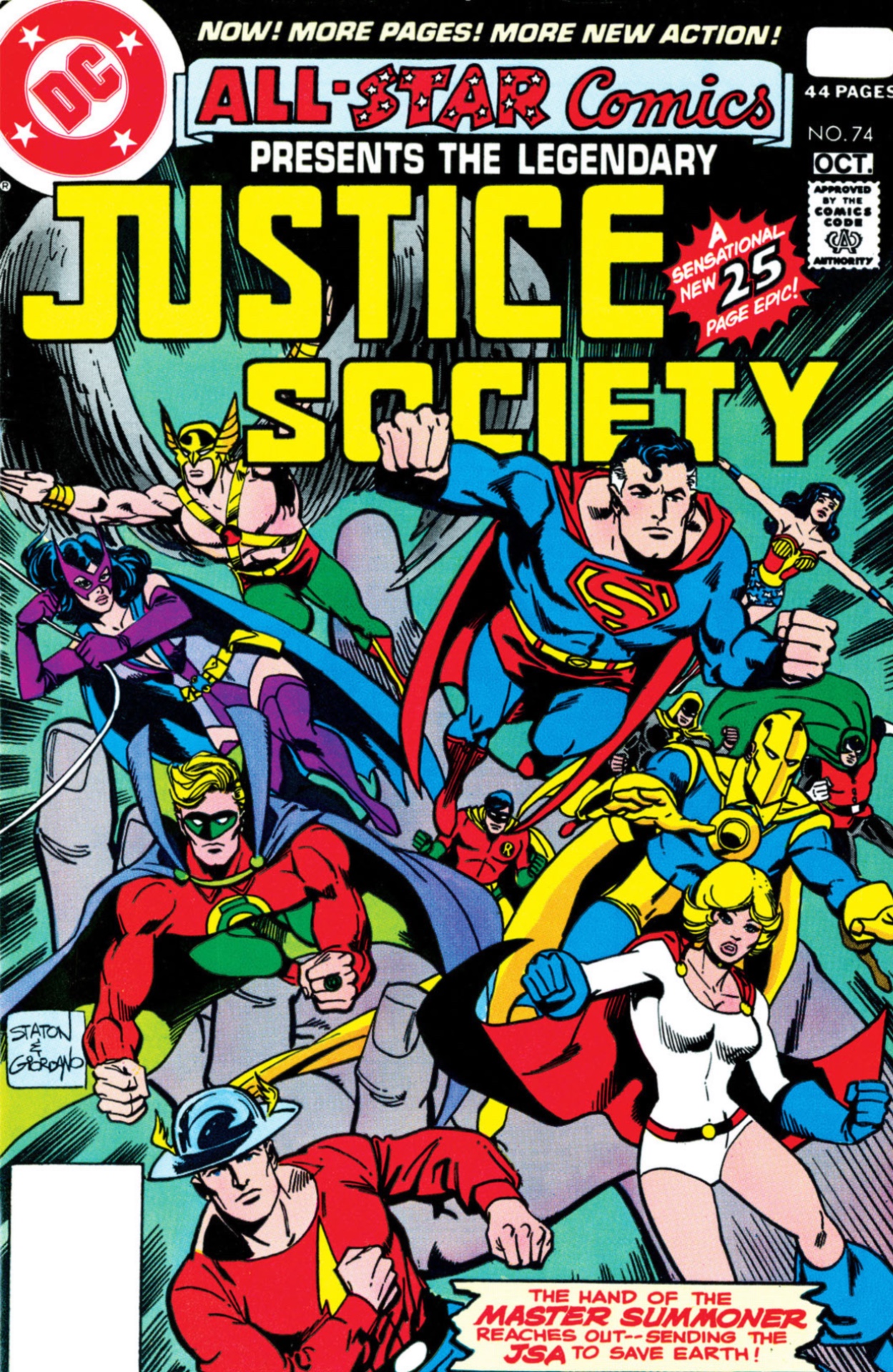
On Earth-Two, history was a bit different, with the Golden Age DC heroes still active, still working as the JSA, and still recruiting new members such as Huntress, the daughter of Earth-Two Batman and Catwoman, and Superman's Kryptonian cousin Power Girl, the Earth-Two counterpart of Supergirl.
Fox began a tradition of crossover stories between the JLA of Earth-One and the JSA of Earth-Two which eventually spun off into a separate line of comics taking place in the alt-reality, including the '80s spin-off teams All-Star Squadron, which featured the JSA teaming up with dozens of other heroes; and Infinity, Inc., a team of the Earth-Two JSA's successors and children.
But 1985's Crisis on Infinite Earths changed DC continuity, eliminating the Multiverse and boiling everything down into a single timeline where the JSA are the predecessors of the JLA in the same reality.
The modern Justice Society
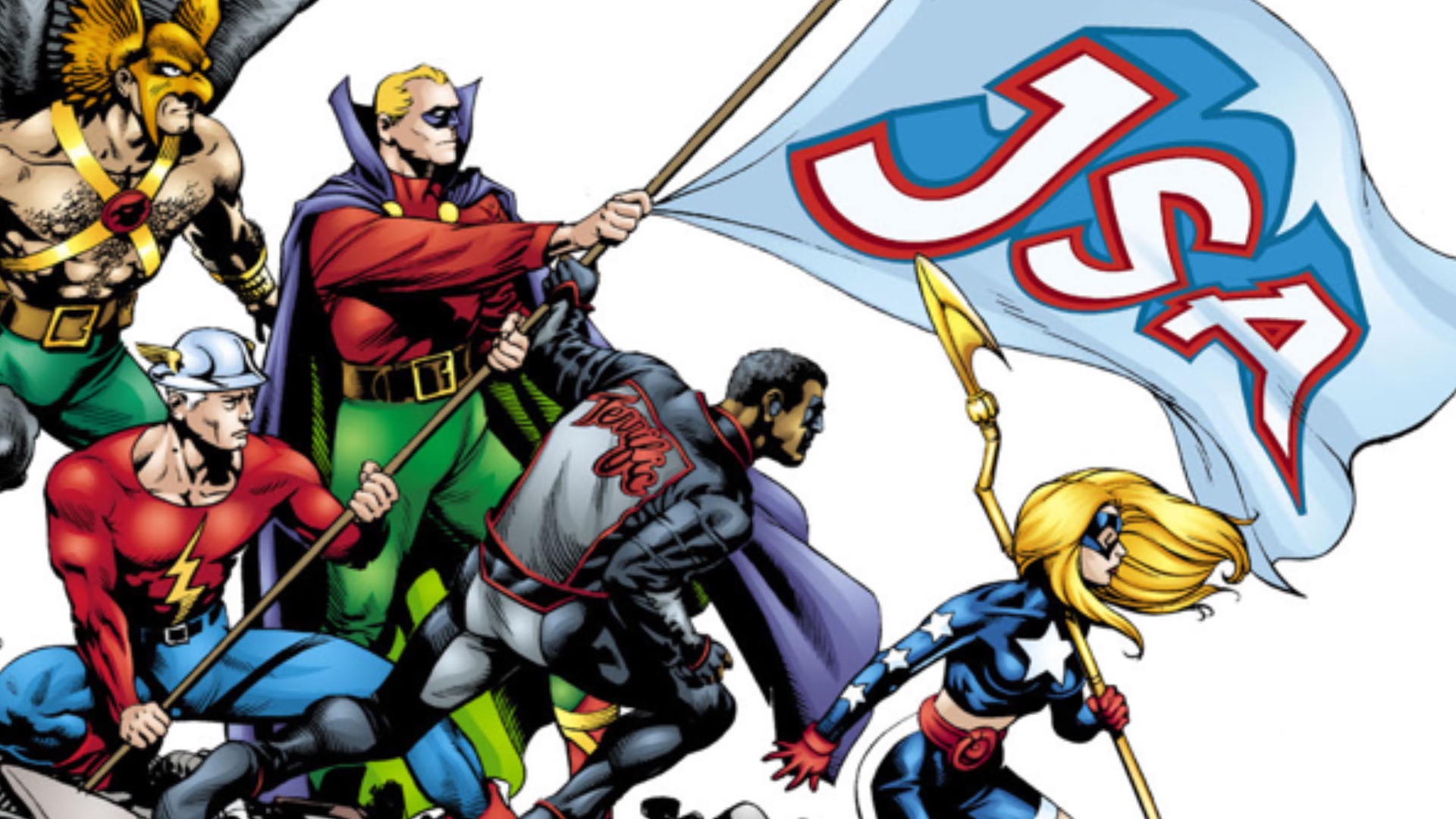
After Crisis on Infinite Earths, the history of the DC Universe was altered to establish that rather than existing side-by-side in two separate, parallel realities, the Justice Society is the direct predecessor of the Justice League, having operated in the Golden Age until being forced into retirement by the US government, with the Justice League reviving the concept of the superhero team in the modern day (sometime around 5-10 years ago in DC's sliding timeline).
With the new timeline established, DC decided to bring back the JSA as the mentors of a new generation of younger inheritors to some of the classic legacies of the Justice Society, including a new Wildcat, a new Dr. Mid-Nite, and other modern legacy heroes of classic Golden Age members. This established the concept that has followed the team since, with elder heroes (who are often de-aged via magic and science in the course of the story) mentoring a new generation of superheroes related to their classic legacies.
In the late '90s, after a series of stories such as the timeline-altering Zero Hour left the team with a somewhat confusing status quo, the JSA was brought back to prominence in the DC Universe with a high profile relaunch from writers David Goyer and James Robinson and artist Stephen Sadowski which brought the team into a more contemporary style with a mix of classic members and new inductees and a focus on the history of the team.
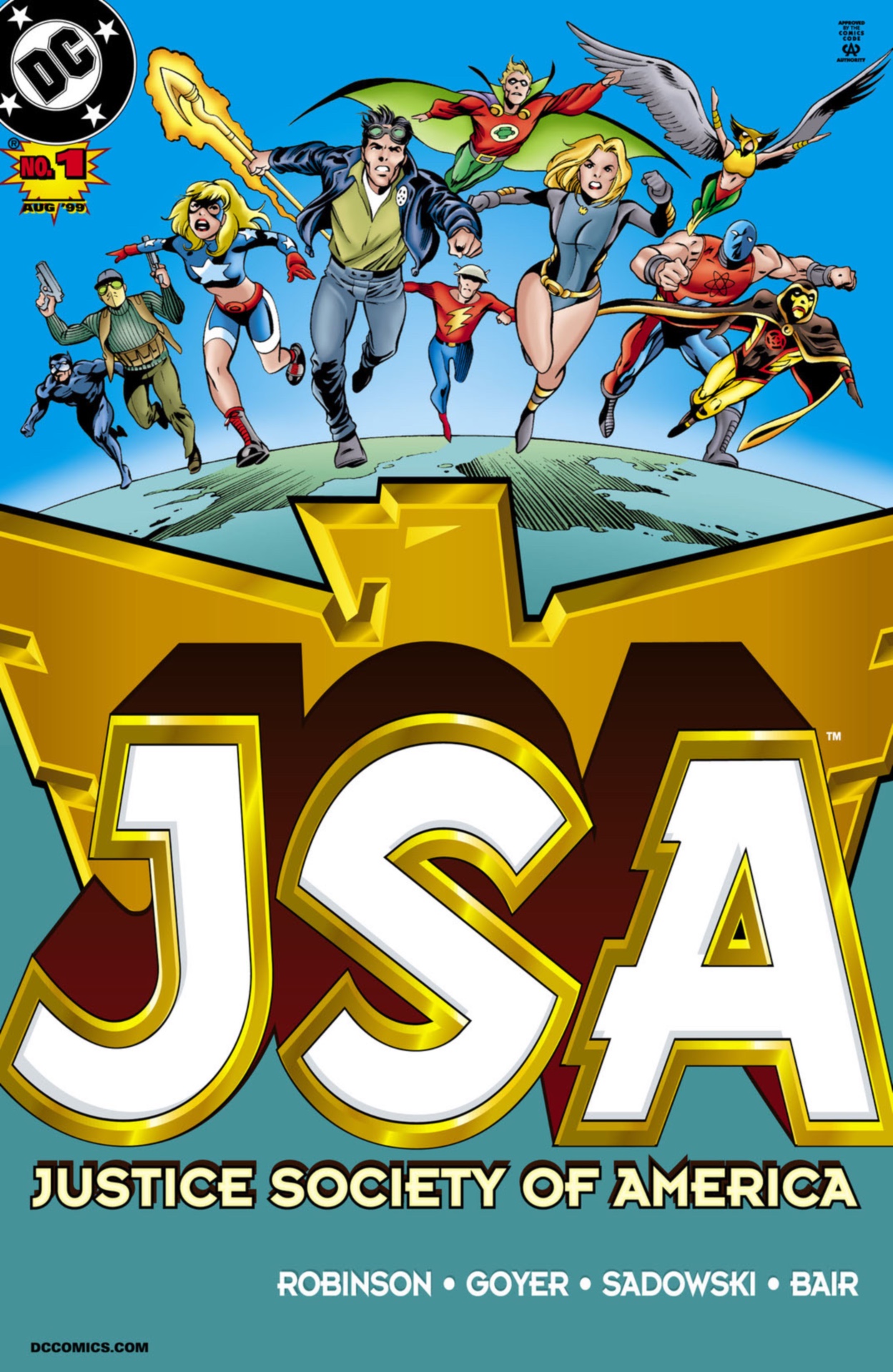
After just a few issues, co-writer James Robinson left the title, and was replaced by Geoff Johns, who went on to write or co-write the JSA's adventures for almost a decade. In the course of Goyer and Johns' run, the team expanded to include modern versions of classic heroes including Stargirl, Jakeem Thunderbolt, Sandman's former sidekick Sand Hawkins, a new Dr. Mid-Nite, Atom Smasher, a new Hawkgirl, and dozens more over the years.
It's in this era that Black Adam joined the team after a stint on the Injustice Society, betraying his fellow villains and turning over a new leaf as an anti-hero with good intentions, despite brutal methods of carrying them out.
That story, in which Adam Smasher comes under the wing of Black Adam and pursues a violent style of justice that the JSA can't abide, forms the basis of the film Black Adam, including some of the complex examinations of what "justice" means to different people and the ramifications of unchecked power.

As with its historical Earth-Two predecessor, the modern version of the JSA came to an end thanks to massive changes to the DC cosmology in the 2010 story Flashpoint, which re-established the DC Multiverse and once again sent the JSA (and their entire history) back to Earth-Two as part of 2011's New 52 continuity reboot.
The JSA stayed separate on Earth-Two for years, with the classic Justice Society heroes such as Alan Scott Green Lantern and Jay Garrick Flash reintroduced as the modern day heroes of their reality - effectively erasing their Golden Age legacy from the DC Universe for almost a decade of real world time.
Most recently, the 2017-2019 story Doomsday Clock from longtime JSA writer Geoff Johns and artist Gary Frank reintroduced several classic Golden Age members of the JSA, with the subsequent Dark Nights: Death Metal bringing back even more of the team. And the current Flashpoint Beyond limited series has once again reinserted a version of the original '40s team back into the history of DC continuity - with a new Justice Society title and a new Stargirl title both written by Johns launching in November.
The Justice Society in Black Adam

The Black Adam movie features just a few members of the Justice Society as they attempt to infiltrate Black Adam's homeland of Khandaq to take him down - all of whom have long standing relationships with the team, some dating all the way back to the '40s.
First up there's Hawkman, seen above. The original Golden Age Hawkman, Carter Hall, is an archaeologist who discovers he has a spiritual link to an ancient Egyptian Pharaoh who's secretly from the alien world of Thanagar. Through the centuries, the Pharaoh and his lover have been reincarnated over and over again thanks to a combination of their unique alien nature and ancient Egyptian mysticism, with Carter Hall and his wife Sheira Hall embodying their Golden Age incarnations as the superheroes Hawkman and Hawkgirl.
Hawkman, who is played by Aldis Hodge in Black Adam, is one of the original members of the Justice Society and one of its longest running leaders with several stints as the JSA's chairman throughout the team's history, into the modern day. Along with having enhanced strength and toughness, Hawkman has a pair of wings made from the strange Thanagarian substance known as Nth Metal that allow him to fly, and is an expert in numerous forms of ancient weaponry.
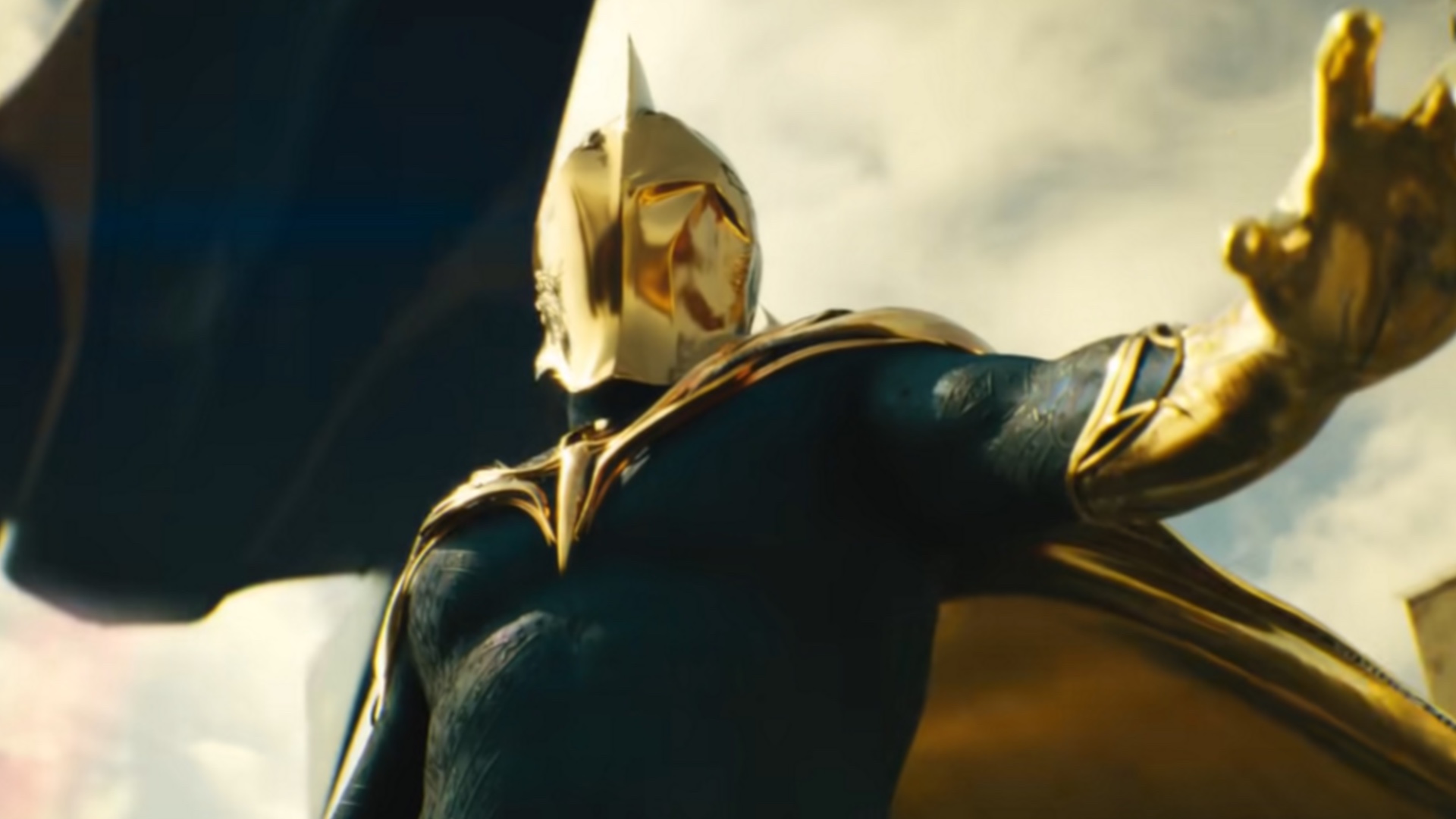
Then there's Doctor Fate, another founding member of the JSA. The Golden Age Doctor Fate is Nelson Blake, played by Pierce Brosnan in the film, a magic practitioner who is possessed by the Helm of Nabu, a helmet inhabited by the spirit of the ancient Egyptian sorcerer Nabu (who does indeed have connections to Hawkman's ancient Egyptian legacy).
The Helm of Nabu grants its wearer near-limitless mystical power, but at the cost of their full autonomy thanks to the semi-symbiotic nature of the magical helm and its inhabitant.

Next is Cyclone, played in Black Adam by Quintessa Swindell, the granddaughter of the original Red Tornado, who was not an android like the modern version of the Red Tornado, but rather a single mom who was secretly also a vigilante in her neighborhood (one of DC's oddest and most endearing characters, to be sure).
Unlike her grandmother, Cyclone actually does have powers consisting of, as you might expect, the ability to manipulate and control wind, including creating cyclones. In comics, Cyclone is one of the newest and youngest recruits to the JSA, who joined in the mid-00's at a time when the team was rapidly expanding to include many new incarnations of the classic Justice Society's members.

Finally, there's Atom Smasher, played by Noah Centineo. Originally known as Nuklon, Atom Smasher has the power to change and grow in size, including proportional strength and toughness. In comics, he's the godson of the original Atom, Al Pratt, who doesn't possess size-changing powers, but is rather a 5'1" hero with super-strength - meaning his name is a play on the juxtaposition of his small size and big power.
In the JSA comic story that inspired Black Adam, Atom Smasher becomes Black Adam's protege, taking on some of his violent methods of enacting justice and even joining Black Adam's personal team of anti-heroes, creating a major rift in the JSA.
Though we won't know exactly what's next for the team in the DC movie universe, there's every indication that the team could stick around or even expand following their introduction in Black Adam. And with a small team composed of both classic JSA members and modern heroes, along with a story taken directly from JSA comics, Warner Bros. seems to be indicating that however the JSA shows up in the movies next, they'll continue to look quite a bit like their comic counterparts.
The Justice Society is one of the best superhero teams of all time.
I've been Newsarama's resident Marvel Comics expert and general comic book historian since 2011. I've also been the on-site reporter at most major comic conventions such as Comic-Con International: San Diego, New York Comic Con, and C2E2. Outside of comic journalism, I am the artist of many weird pictures, and the guitarist of many heavy riffs. (They/Them)



